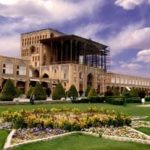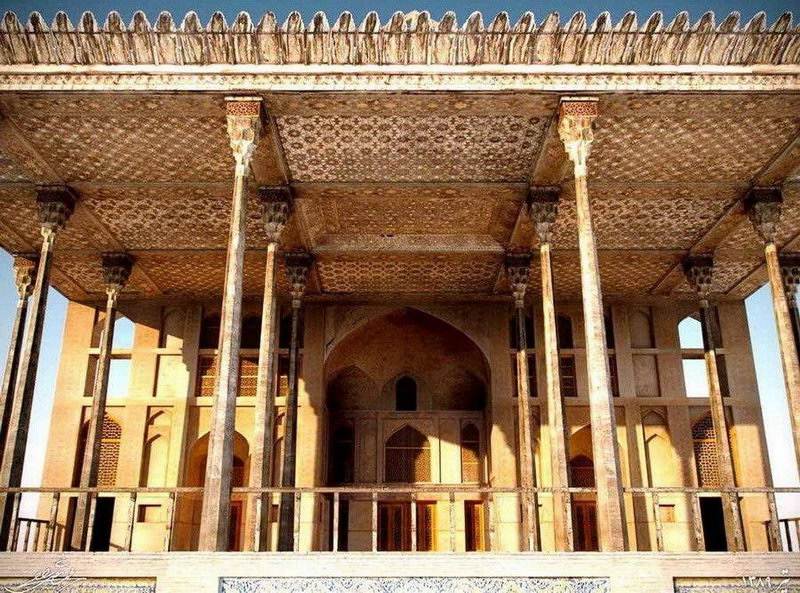Ali Qapu Palace
The Ali Qapu palace stands in the western part of the Naghsh-e Jahan square, Opposite the Sheikh Lotfollah Mosque and is considered one of the most important architectural masterpieces of the seventeenth century. The construction of the building was completed in the 1644.
This building was the central gateway to all the buildings that were built in the area of Safavid in the era of Naghs-e Jahan square. Initially it looked simple and over time, during the reign of Shah Abbas, several floors were added. At the time of Shah Abbas II, the large colonnaded lodge was added.
The Safavid king received ambassadors and high-ranking personalities in this palace. At the time of Shah Abbas II, from the veranda that was added to the main building, the sovereign and his guests admired the landscape, the polo meetings, the illuminations, the fireworks shows and other performances that took place in the square .
The name of the building consists of the two words ali e qapu that together they mean "high portal". Other names with which he was known are "doulatkhane-ye mobarake-ye naghsh-e jahan" and "palace doulatkhane".
On the ground floor there are two rooms which at that time were destined for administrative and governmental affairs. On the third floor there is a large loggia with 18 tall columns; in the middle of this particular loggia there is a marble and copper decoration whose symmetry is reflected in the decoration of the ceiling.
Everything about Ali Qapu is magnificent and precious. In addition to the wall paintings by the famous Safavid artist Reza Abbasi, there are stucco works on the top floor, also known as the "music room" or "sound hall". In this part of the building, different types of cups and carafes were used on the walls: the creation and finishing of these shapes, as well as being an ornamental representation and a sign of the creativity and initiative of the stucco artists, were realized in such a way that these same hollowed shapes absorbed the echo produced by the melodies of the players and the musicians and the voices arrived naturally and without rumbling to the ears of the listeners.
Ford Richards, famous painter, who visited Iran at the beginning of the qajar era, writes about the stucco decoration of this room: "... these recesses are like different pieces of a puzzle, placed next to each other with a proportion particular…".
In addition to the passing of time which unfortunately caused numerous injuries to Ali Qapu, other destructive events, such as the assault and domination of the Afghans, several wars and the displacement of the capital and the indifference of the rulers after the Safavid era have caused damage irreparable to the building.
In Qatar times Ali Qapu was for a few years the place of residence and work of Zell-os-Soltan (NdT: prince, son of Nasseroddin Shah and governor of Esfahan) who made changes in the inscriptions of the palace. The inscriptions on the eastern front of the building and the calligraphy tablets above the entrance door that make mention of the 1895 restorations are explanatory of this topic.
In the last forty years, because the risk of ruin threatened the Ali Qapu building, and also thanks to the attention of the people and the state organs for the cultural heritage, restorations were carried out by commissions of local and international experts.
Altogether Ali Qapu is a building for the ceremonial of good workmanship and another good result of the architectural art of the Safavid period, which from its summit shows well the panorama of the ancient city of Esfahan and its millennial development.








